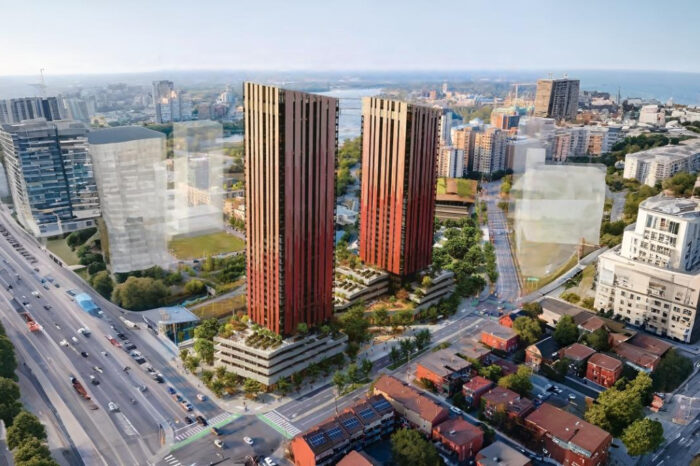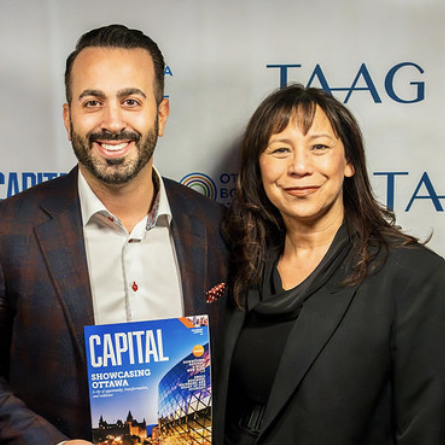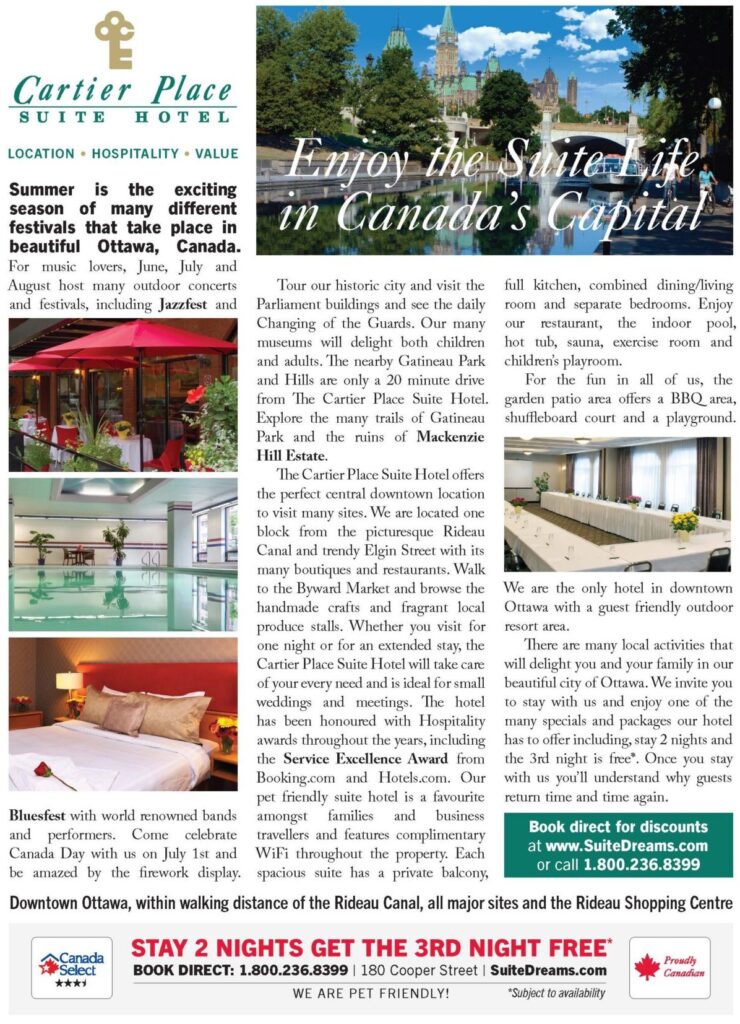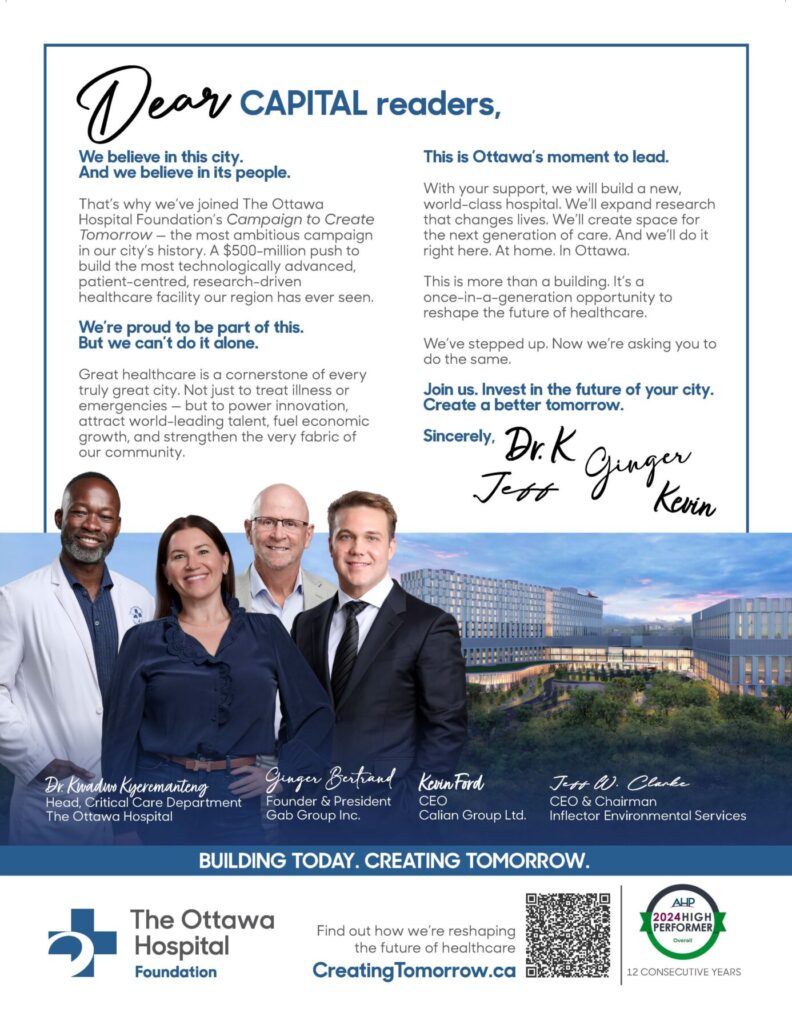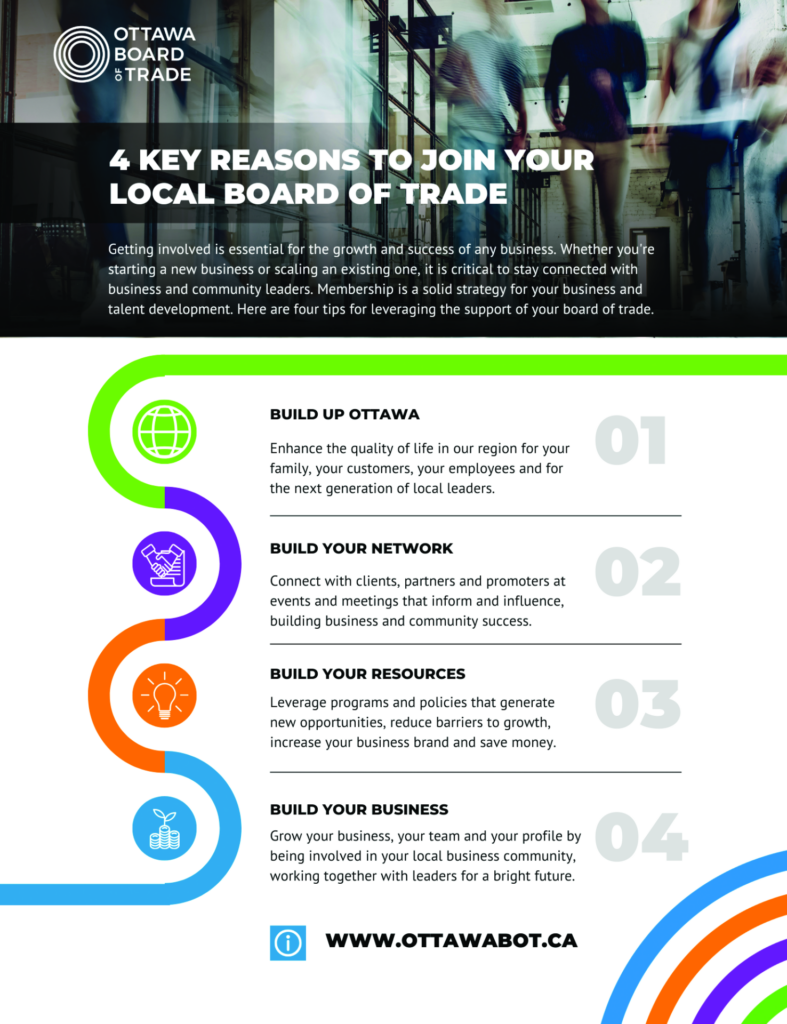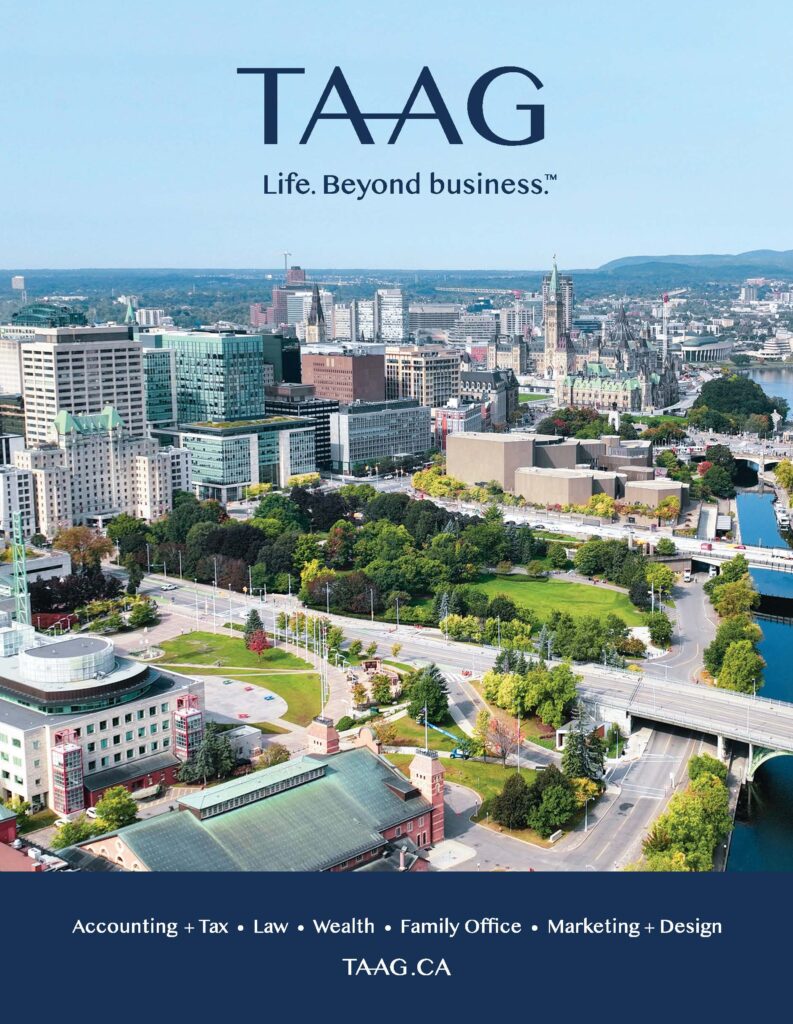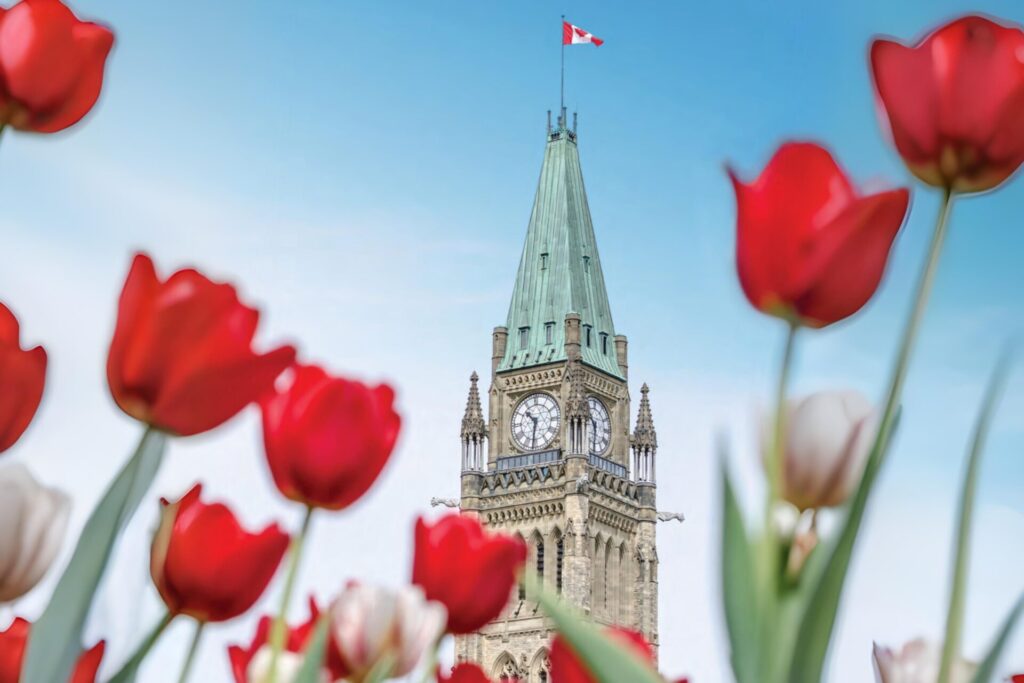Building Ottawa Better

BY JENNIFER CAMPBELL
“WHEN THEY GO low, we go local”—those were the words of Mary Rowe, president and CEO of the Canadian Urban Institute, when at the Ottawa Board of Trade’s city-building summit in April. Rowe was referencing the patriotism now being witnessed in Canada as a result of U.S. President Donald Trump’s threats to the country’s sovereignty and its economy.
Buy Canadian” and “support local” were themes of the day-long summit, but there were plenty of other ideas for building Ottawa better.
Mayor Mark Sutcliffe things kicked off, hitting on many of the themes he raised in his State of the City address (see page 10). Towards the end of her panel, Rowe raised one of his points—that he and his council kept the municipal tax increase lower than any other city in Canada.
“If I ever get invited back, I hope I will hear the mayor champion a rationale of why your property taxes have to go up a bit to invest in the quality of life that you believe is making Ottawa work, rather than feeling that the message to convey is that he’s kept taxes to the lowest they can be.”
Rowe’s comments were met with applause. She said funding services is investing in our collective life and we shouldn’t pressure politicians to keep property taxes low. “It’s a very minimalist view,” Rowe said.
Policing in the Core
In Rowe’s “Downtown Ottawa action agenda” panel, Ottawa Police chief Eric Stubbs said downtown protests have increased since February 2022, when the trucker convoy “freedom” movement took over Centretown. Regular weekly protests by Palestinian supporters and events such as Canada Day “really impact our ability to stay on our mandate,” he said, adding that councillors across the city “want more of us.”
Stubbs said the force is stretched thinly. Taking just one example, he said victims of a $50,000-plus fraud might have their problem looked at in a year. “That’s not good,” he said. “We have to improve our service.”
Last year, the force added 135 new officers; the plan is to increase that again this year.
“And we’re returning to more of a community policing model… We’re a very reactive service now. We want to be proactive.”
Debbie Stewart, general manager of the City’s strategic initiatives department, said her department was created to bring focus to the council’s highest priorities: affordable housing, climate change, resiliency and economic development. “Housing is the one area where we really see all of these elements coming together,” Stewart said, adding that downtown is a priority for housing.
Jennifer Armstrong, acting director of transportation at the City, said the key to successful transit downtown is a strong regional transit system that’s connected to more communities. Ottawans got out of the habit of taking transit in the pandemic and in addition to getting people back on transit, Rowe says today’s planners need to be thinking about how their grandchildren will move around the city.
Asked how housing, policing and transportation could be collaborating, Stubbs said his neighbourhood operations centre is working with more than 30 social agencies downtown, along with City Hall, to help put vulnerable citizens on a positive path.
Stewart said they can work together to create vibrant economic activity in the ByWard Market and that includes making sure more people live there.
Armstrong said the key is making sure the City stimulates housing activity by approving lands for adding to the urban boundary, addressing intensification and providing infrastructure to support growing communities.
Empowering Developers
In introducing her panel featuring a developer and an architect, Jennifer Cross, business development manager at MARANT Construction, said issues such as inter-provincial tariffs, permits, procurement, innovation and infrastructure are front and centre at the moment and her industry is waking up to the reality that the old ways of doing business need to be “dismantled in favour of unity.”
“To build a stronger, more cohesive city and country, we’ve got to figure out how to come together and share ideas, resources and solutions,” she said.
Developer Jonathan Westeinde noted that Canada is 34th out of 35 OECD countries in terms of ease of getting approval for some
permits. Architect Andrew Reeves noted that at a recent city-building conference he attended in Germany, planners said they built the transportation system before building communities, which runs counter to what Ottawa’s done.
Reeves’ first project was a crack house that he turned into a mini-house.
“We need to be bold in how we go about the business of building,” Reeves said. “Our city represents everybody in Canada. Toronto doesn’t have that advantage; Montreal doesn’t have that advantage. That’s something we need to seriously exploit and build upon.”
Westeinde says the most rewarding projects of his career, including Zibi in Ottawa-Gatineau, were the ones where three levels of government were collapsed to make the process easier.
Reeves and Westeinde both lauded Ottawa’s new library, and Reeves said the hockey arena at LeBreton Flats is another project that will build on that momentum. He said planners need to “invest in happiness.”

Ottawa Police chief Eric Stubbs, seen here with, from left, Debbie Stewart, Jennifer Armstrong and Mary Rowe, said the force added 135 new officers last year and plans to add more this year. Photo: OBOT

Jennifer Cross, business development manager at MARANT Construction, said to build a stronger city, we have to figure out how to come together and share ideas, resources and solutions. She’s shown with Jonathan Westeinde (centre) and Andrew Reeves. Photo: OBOT
Animating the Capital
Tobi Nussbaum, CEO of the National Capital Commission (NCC), gave the group an update on the NCC’s projects. He started by revisiting River House in the context of the NCC’s bid for more funding to maintain and improve on its many assets. Another project that will beautify the capital is the former Nepean Point park behind the National Gallery. “It’s a spectacular lookout,” Nussbaum said, adding that it was to open in late May. Westboro Beach’s new pavilion, complete with equipment rentals, a children’s play area and a restaurant, will open around the same time.
He talked about the opportunities at Victoria Island, the Zibi project on Chaudiere Island and about a project on Lady Grey Drive behind the Royal Canadian Mint. The NCC has to replace a 110-year-old wall and while doing so, it’ll build a promenade on the waterfront. Speaking of waterfront, it plans to install a recreational dock at Dow’s Lake as a pilot project.
“The experience at River House taught us the importance of activating the waterfront,” Nussbaum said.
He noted the NCC continues to work closely with the Ottawa Senators on the sale of 10 acres of land for a downtown arena. The NCC also sold a parcel of land next to the new library that will see the development of 600 units, 43 percent of which will be affordable. Another project across from the War Museum will include 900 units, 15 percent of which will have three bedrooms. Finally, it’s working with partners on a zero-carbon district-energy project that will demonstrate national leadership on climate change mitigation.
Amplifying Ottawa
Next up were Ottawa’s culture vultures.
Christine Crump, president of Hard Rock Hotel & Casino Ottawa, spoke about her project, which will include a casino, raceway, boutique hotel and 10 restaurants and bars. Crump also dispelled the notion that Ottawa is no fun.
Mark Monahan, president and CEO of Ottawa Bluesfest, said his festival generates $35 million to $40 million in the city and employs 17 full-time people who are contributing to a pension plan—unusual in the arts. He noted that Algonquin College established a festival events program years ago and expanded it in 2023.

Erin Benjamin, president and CEO of the Canadian Live Music Association, said music is an important part of city-building. Photo: OBOT
Ali Shaffaee, regional vice-president for Live Nation, said his organization produced a record number of events in Ottawa in 2024 and is on pace for another record this year. It’s also building a 2,000-person concert hall in the ByWard Market.
Mathieu Grondin, the city’s nightlife commissioner, said a lot of city-building comes from the private sector. He said the fact that his position was created “shows a level of commitment of our politicians to develop nightlife and vibrancy.”
Panel moderator Erin Benjamin, president and CEO of the Canadian Live Music Association, noted that music is an important part of city-building if you want a city where you can “live, work, stay and play. These folks have the play part nailed.”
Powering Ottawa
The audience then heard from Enbridge, the largest natural-gas storage, transmission and distribution company in North America and it has a pivotal role to play in the city’s energy transition. It is on track to achieving net zero emissions for its operations by 2050 and it continues to make investments in solar, wind, renewable hydrogen as well as carbon capture and storage.
Bryce Conrad, president and CEO of Hydro Ottawa, told the group the city had seen its share of massive storms, and it’s working at doing a better job in terms of keeping the lights on in storms and also in long-term planning.
“We’re investing heavily in the grid,” Conrad said. “Traditionally, we would build a new station every five years, but going forward we’re building a new station every year. To meet the electrification events that I know are coming our way, we need to double and triple the grid over the next 25 years. We need to change the way we do business.”
Moderator Kelly Daize, executive director of the Kanata North Business Association (KNBA), said Ottawans will have to think differently about how we support high-energy-use pockets of the city, noting that power bills account for 30 percent of the operating costs of about a third of her companies in KNBA. She says regional energy strategies are becoming key to attracting and retaining companies and she’s had companies approach her only to pass on Ottawa because it couldn’t guarantee their power needs.

Christine Crump, president of Hard Rock Hotel & Casino Ottawa, dispelled the notion that Ottawa is no fun. Photo: OBOT
Education and Health
Cameron Love, president and CEO of The Ottawa Hospital, says he’s recruited 3,500 people over the past four to five years, including physicians, half of whom have come from other countries. They come because of the basic clinical programs and the advanced research.
“But the third, more interesting [question I hear] when recruiting physicians is, ‘What does the community have to offer?’ It really is around how we’re building, in essence, a full community that allows us to recruit people from around the world.”
Love says there are about eight hospitals in Ontario that drive 85 percent of the research output for the country and the Ottawa Hospital is one of them. He says MS is a focus and some treatments are proving successful in fully curing patients. He also talked about how the hospital partners with the private sector to innovate in research and Scott Delaney, chairman and CEO of Lumenix talked about his partnership with the hospital for its hand-hygiene application.
Julie St. Pierre spoke about the University of Ottawa’s Advanced Medical Research Centre (AMRC), which, when it’s finished, will have lab space all the way through to clinical care. There’s also an innovation incubation space.

Julie St. Pierre, shown with Scott Delaney, spoke about the University of Ottawa’s Advanced Medical Research Centre, which, when finished, will have lab space all the way through to clinical care. Photo: OBOT
“AMRC is a really rich ecosystem that we’re building and it’s supported by cutting-edge scientific platforms,” St. Pierre says, adding that the centre is a seven-storey facility, connected to the faculty of medicine, the Ottawa Hospital and CHEO.
She said Ottawa’s research community is doing some good collaborating and working together is of the essence.
AI in Cities
Greg Lindsay, urbanist and futurist, shared how artificial intelligence is reshaping the way cities grow, function and thrive. He talked about how Hong Kong is using new machine-learning techniques that can take general weather forecasts and map them hyper-locally to ultimately send alerts to people on the block level. Treefolio is an app created at Cornell Tech. It does an annual LIDAR scan of the city to create a complete map of every tree in New York City to ultimately understand what neighbourhoods are suffering more from urban heat in the summers. An MIT researcher looked at how people use public spaces now, comparing our habits to those of a study done in the 80s.
“They found people are less likely to linger in public space … that people are walking faster as cities get bigger and wealthier,” Lindsay says.
Looking to the future, Lindsay sees municipalities using AI to map cities and amenities and to keep people safe—but he also sees air taxi services, autonomous vehicles and even autonomous buildings.

Greg Lindsay, urbanist and futurist, shared how artificial intelligence is reshaping the way cities grow, function and thrive. Photo: OBOT
